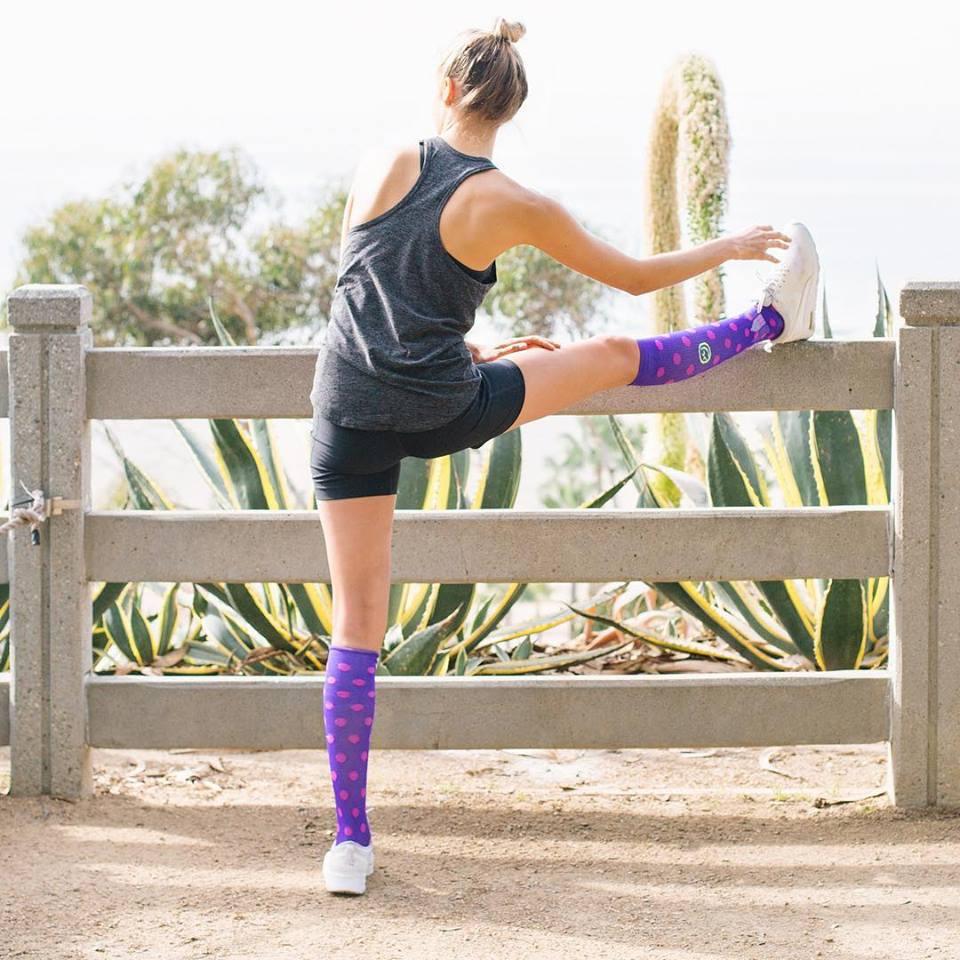Running is a fulfilling sport that offers many benefits. That being said, whether you’re a seasoned runner or an enthusiastic newbie, being injury-free should be a priority.In this post, we’ll take a look at the causes of five common running injuries and the steps you can take to avoid them:
1. RUNNER’S KNEE
There’s a good chance that you’ve experienced patellofemoral pain syndrome (PFPS) or runner’s knee in the past. This injury often presents itself as a dull, aching pain around or behind the patella (kneecap) - especially at the point where it meets the lower part of the thighbone or femur. In other cases, the pain could be sharp and sudden. Runner’s knee may disappear while you’re running, only to pop up again during your training or worse, mid-race.
Cause: Tight hamstrings and weak quadriceps are often to blame for runner’s knee. Remember your kneecap floats freely as you bend your leg, so any tightness, weakness or muscle imbalance will throw the bone off track. Aside from issues with muscles close to your knee, poorly conditioned muscles in your hips and even a weak core can lead to this injury.
Prevention: Cross training is a great way to switch up your routine and prevent runner’s knee. You can consider activities such as swimming, cycling and yoga. In addition, focus on exercises that strengthen your quads, condition your core and stretch your hamstrings. Check out this article for more tips on cross-training exercises to supplement running and prevent injury.
2. ACHILLES TENDONITIS
Achilles tendonitis refers to pain, inflammation and or degeneration of the achilles tendon -- that band of tissue linking your calf muscles to your heel.
Cause: This injury is typically caused by excessive pronation (common in people who have flat or flexible feet) in addition to tight calf muscles.
Prevention: The best way to prevent achilles tendinitis is to build up your calf muscles. According to Mayo Clinic, “strong calf muscles enable the calf and Achilles tendon to better handle the stresses they encounter with activity and exercise”. You should also avoid activities that place excessive stress on your tendons, such as hill workouts. If you must incorporate these types of workouts, build up slowly over time and don’t forget the importance of warming up before you begin. Always listen to your body and be sure to rest whenever you start to experience pain.
3. ANKLE SPRAIN
The ankle is a joint that is commonly injured in everyday life. In fact, it has been estimated that 28,000 people sprain their ankles in the United States each day. It shouldn’t be surprising that it is a common running injury as well. It also happens to be a joint that is frequently re-injured.
Cause: This injury typically occurs due to repeated hard landings or a simple misstep that causes your ankle to roll. According to Healthline, the latter can “stretch or tear the ligaments that hold your ankle bones and joints together.”
Prevention: There are several exercises that you can incorporate into your training regimen to prevent ankle sprains. These include ankle circles, the ankle alphabet, calf raises, shin raises and the single-leg balance. If you’ve never heard of these, then be sure to check out this article for the exact moves to keep your ankles strong.
4. SHIN SPLINTS
Ever experience a throbbing pain along your shin bone AKA your tibia? As you may have guessed, this is known as a shin splint. There are two main categories when it comes to this injury -- anterior shin splints which occur on the front outside part of the leg or medial shin splints which occur on the inner side of your shin bone.
Cause: Shin splints are very common runners among who:
Prevention: There are a few steps you can take to avoid shin splints:
5. BLISTERS
RELATED: How to prevent blisters while running At Crazy Compression, we have many styles to fit your personality. Let us know your favorite style by joining our community on
































Leave a comment
This site is protected by hCaptcha and the hCaptcha Privacy Policy and Terms of Service apply.